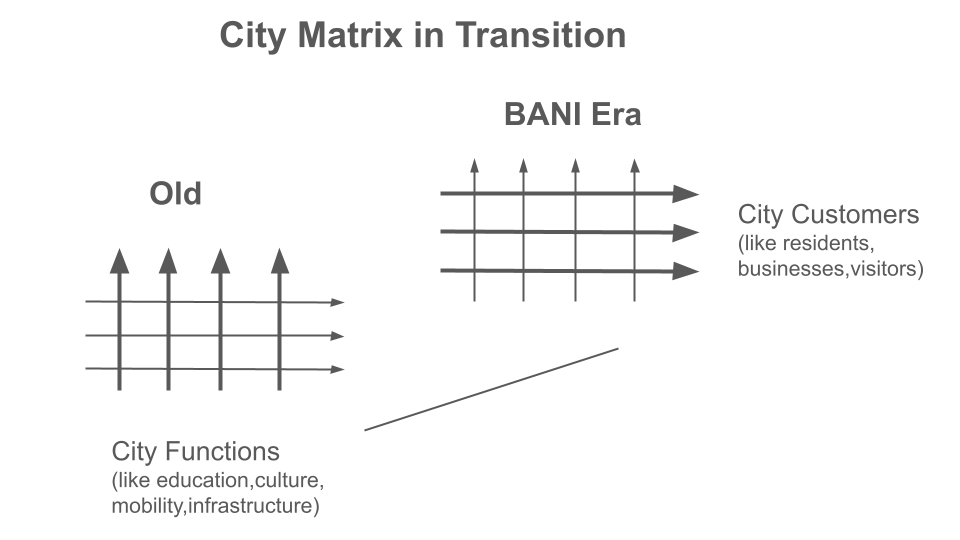City-to-Customer Shift
What if cities treated people like customers, not just citizens?
In today's turbulent world, this question isn't just provocative — it's essential. We live in a BANI environment — brittle, anxious, nonlinear, and incomprehensible — where change is constant and patterns of the past no longer predict the future.
Why the Old City Model No Longer Works?
Cities have traditionally been seen as slow-moving institutions — one layer in a national system. But this outdated view ignores a crucial truth: cities are closest to the people. They're not just service providers — they are customer interfaces for modern life.

Picture. City Matrix in Transition.
The challenge? Most cities still operate on functional, siloed models. They haven't evolved to actively manage customer relationships the way leading companies do. But now, they must.
Digitalization, data, and AI have opened new possibilities.
Cities can sense needs faster, personalize services, and proactively shape solutions. But that requires a shift — not only in technology, but in mindset and structure.
To meet people where they are, cities need to embrace a customer-centric matrix — one that blends traditional operations with human-driven design, agility, and innovation.
Why does this matter now?
Because all customers — individuals, families, organizations — face changes not just from markets, but from geopolitics, economics, and climate. In that noise, cities are best positioned to provide calm, clarity, and coordinated response.
The future belongs to cities that understand their customers.
What would it take for your city to become one of them?